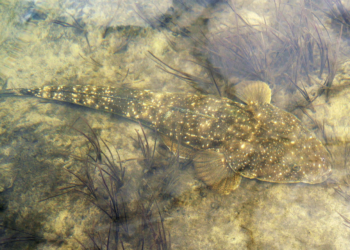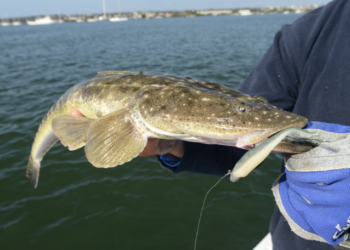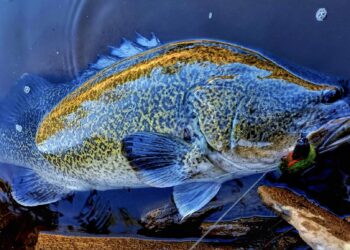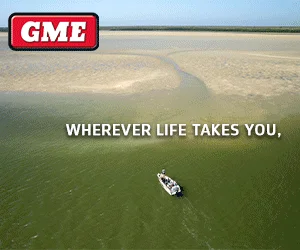If you want to catch more and bigger fish, you need to learn to “drive” the lures you use so they work effectively.
LURE fishing is all about putting a lure in front of a fish and making it bite. When it comes to successfully using hard-bodied minnows, the key to success is all about how you make that lure move. While most lures have an inherent action, getting the most out of a lure relates to how you retrieve it. It’s important to realise that different lures require very different retrieves. To get the best out of a particular lure you have to drive it properly. Every lure has a lot of subtlety and nuance associated with its use. More often than not, success relates to the angler rather than the lure. You have to “learn” how to drive every lure you put on your line.
When casting a floating hard-body, the rate at which the lure floats back to the surface can have a critical effect on how well the lure works. Buoyant lures that float quickly often “back up” as they float, which makes this style of lure ideal for trolling in heavy snags as they can be negotiated over timber. More often than not, however, a “fast float” can mean the lure rises too quickly out of the strike zone and fish that are looking at it lose interest. Turning a lure from a “fast float” to a “slow riser” or “suspender” can get you a lot more bites, particularly when casting at deep snags. If you cast, crank the lure down to its running depth and then slowly twitch it back in order to keep it in the strike zone for longer. This requires a bit of tuning. Adding heavier rings and trebles can make a lure suspend, but can also decrease the action of the lure. Small stick-on lead dots are a great little trick for tuning some hard-bodied lures. I like a lure with a strong inherent action that can take the weight of bigger, stronger hooks and still maintain action. Some lures, particularly expensive Japanese ones, are finely tuned works of art that are designed to swim optimally with the light hooks they are sold with. This can make these lures very under gunned when it comes to barra and other tough Aussie fish. If you add big solid trebles and rings the action of the lure is generally greatly reduced. This, in turn, greatly decreases its effectiveness.
I’ve just returned from a week of barra fishing in the Kimberley (I’ll have a feature on this trip in the April edition) and I learnt a lot while there. The fishing was rewarding and often tough due to big tides and short windows of activity, but if you got the retrieve right and planned every cast there were a lot of fish to be pinned. A lot of these barra were holding in big spindly bushes in the main channels and wouldn’t stray far from cover. The secret to getting a bite was to rig the lure with heavy hooks and rings, crank it down fast and from there slowly work it out.
Doing this produced some monumental bites and bust ups in heavy cover, so I had to go to a complete lock up of the drag to get fish out. Brave high-risk casts through sets of heavy timber got rewards but you had to take the risks of being stitched up by a rampaging big barra at close quarters.
In this situation you need to know your lures well and be confident in using them. The two crash divers I used were Jonesy’s Rhinos and Killalure River Rats. Rigged with big heavy Shogun trebles on industrial split rings, these lures maintained action but floated very slowly, just a tad above neutral buoyancy. Both lures could be rapidly cranked down to depth and then slowly worked deep to get crashing hits from some of the maddest barras I’ve ever encountered. Those Kimberley fish are lean and strong fighting machines. The interesting thing was that each lure seemed to need a totally different retrieve to get bites. The Jonesy’s Rhino worked with a small down twitch, pause, then up twitch, while the River Rat needed a repeated slow draw, then pause, then draw again. This takes a while to work out, based on the bites you get on different retrieves. I’ve used both lures quite a bit, particularly the Rhino, and what I’ve learnt is that every lure you use needs time on the rod to work out the subtle tricks that earn you bites. If you get frustrated and constantly change lures you will never work out how to use a lure properly.
Regardless of whether you chase bream, flathead, trout, barra or bass, every hard-bodied lure you own needs to be practiced with. The subtlety of different types of retrieve can make an enormous difference to the effectiveness of a lure. I find I’m constantly varying my retrieve with a new lure to work out the best way to fish it. To do this properly you need a few fish to get involved, and when you get hit on a particular retrieve, remember exactly what you did. Some species, such as flathead, seem to respond to a horizontal “rip”, followed by a pause, whereas barra, bream and bass often like a subtlety in the twitch of the lure. Compare “up twitching” (where you lift the rod tip up) to “down twitching” (where you twitch the rod tip down). Watch your lure in the water and you’ll soon realise that in some lures tiny rod movement greatly changes the lure’s action.
Finally, if you are to use and move a lure well, you must use the rod in your dominant hand. For right-handers this means using left handed baitcasters and threadlines. If you haven’t made this change it’s definitely worth trying, as this means you have greatly increased dexterity to move a lure properly, rather than look like a poorly co-ordinated and clumsy lure driver still on his or her L Plates.





















